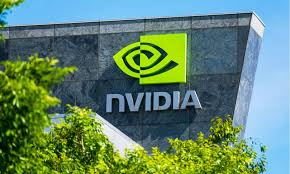Nvidia has become the combined Taylor Swift and Shohei Ohtani of stocks – glamorous, constantly hitting the ball out of the park literally and figuratively, attracting millions of delirious fans paying up to bask in their magic. Like Swift and Ohtani, Nvidia has racked up astounding stats: $2.5 trillion of market cap created in just 10 months, with investors feverishly trading its stock far more than any other. In a year, Nvidia has become a true star.
But the analogy to the entertainment industry breaks apart on the matter of what the fans are paying for. Acolytes of Swift and Ohtani buy expensive tickets for a few hours of galvanizing fun, while investors in Nvidia want their money back and then some. A close look at the data suggests long-term investors who buy the stock at recent prices are unlikely to get the returns they’re expecting.
The analysis is based on economic profit, also called economic value added (EVA), a fundamental measure that avoids distortions in the accounting that publicly traded companies must use. It’s centered on capital, how much it costs, and how well a company uses its capital to create profit. Research has found this method of analysis is more predictive than looking at earnings per share.
An economic profit analysis assembled at Fortune’s request by Institutional Shareholder Services’ ISS EVA shows that Nvidia is every bit the superstar it appears to be. You don’t have to be a finance wonk to understand these numbers: Nvidia’s return on capital over the past four quarters is 140%, while its cost of capital is 9.3%. “Staggering,” says Bennett Stewart, one of the pioneers of economic profit analysis. “It’s hard to fathom how they could get a return on capital much higher than that.”
Here’s how astoundingly Nvidia makes money. ISS calculates EVA data for 21,000 publicly traded companies worldwide, and it reports that Nvidia is in the 100th percentile for profitability. That doesn’t mean Nvidia is in the top percentile (which would be the 99th percentile). It means Nvidia ranks above every one of those other 21,000 companies, or possibly ties with some of them.
But those remarkable numbers reflect the past, and stock prices are based on the future. Thus the critical question for investors: What are the chances that Nvidia will perform well enough in future years to justify the stock’s price, recently about $136? EVA can help answer that question.
We asked ISS EVA to calculate how fast Nvidia would have to increase its economic profit annually over the next 20 years in order to justify its recent share price. The answer: 21.4%. Nvidia must increase its economic profit by 21.4% every year for 20 years. If it can’t do that, it’s recent stock price is too high.



